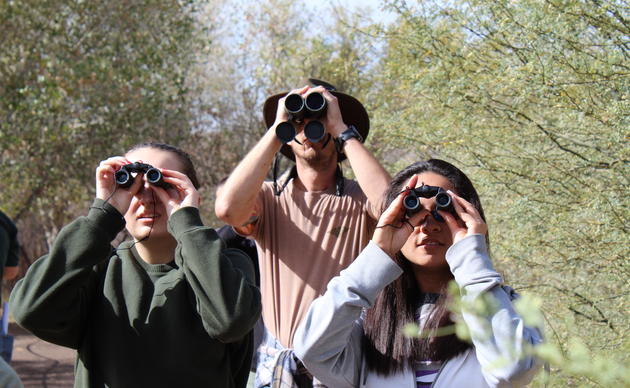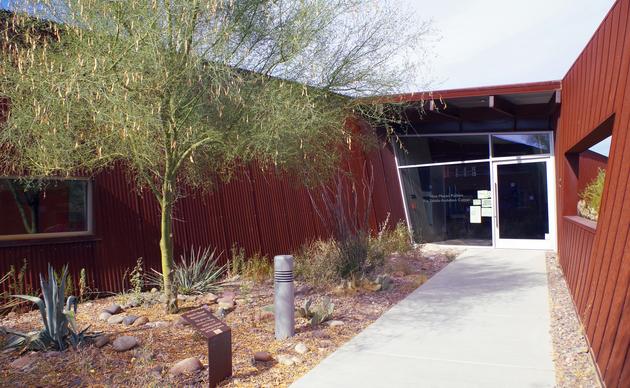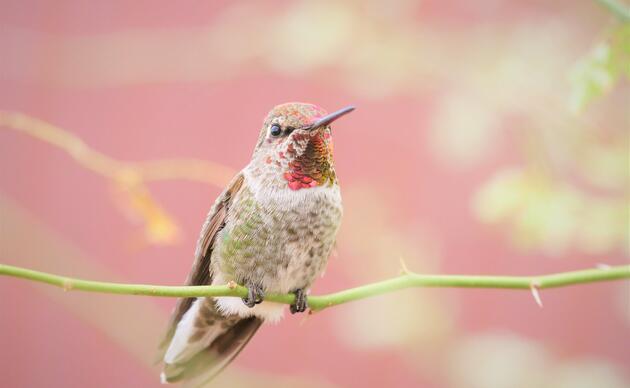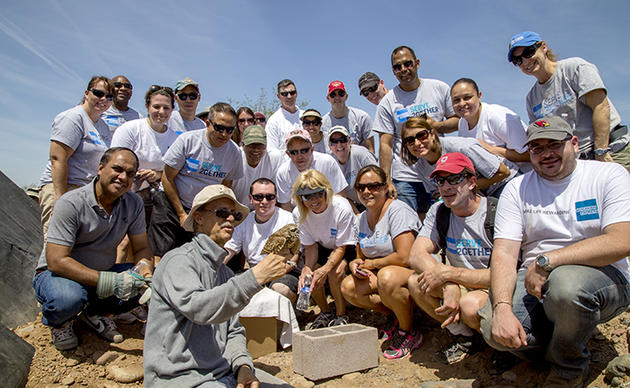An Invitation to a Healthy Arizona Home
A healthy yard and home is a safe environment that minimizes threats to birds, other wildlife, and people, and supports a diversity of plants and animals. A rich personal landscape helps minimize our ecological impact by providing habitat for plants and animals that may have been destroyed when your house was built, and eliminates the effects of destructive management practices of previous owners.
How to Create a Wildlife-Friendly Home:
Meet Their Basic Needs
1. Use Native Plants - Plant native desert shrubs and trees to provide food, nesting places, and shelter for birds and other wildlife. Non-native invasive species threaten biodiversity and can displace native plants. Visit our pages on Native Plants and Hummingbird Plants for more information.
2. Provide Water – Provide a small, shallow, water source for wildlife. A drip is good for attracting birds and other wildlife. Hummers like falling water. Empty and refresh containers daily.
3. Don’t Be Tidy - Leave snags for nesting places and create brush piles for shelter. Leave the flowers of annuals to dry so that birds can find the seeds, and drop dead flower heads in the garden where they remain available to birds and provide mulch.
Keep Wildlife Safe
4. Prevent Window Strikes– It's estimated that as many as 1 billion birds die each year in the United States due to collisions with windows. Put window decals and screens up on your glass windows and doors to prevent window strikes.
5. Keep Cats Indoors At All Times - It’s estimated that free-roaming cats kill hundreds of millions of birds every year. In addition, outdoor cats lead considerably shorter lives on average than cats kept exclusively indoors.
6. Reduce or Eliminate Pesticide Use- Reduce or eliminate your use of synthetic pesticides by choosing less toxic alternatives.
Visit Audubon.org: Keep Wildlife Safe for more suggestions.
Increase your Environmental Contribution
· Conserve Water- Minimize the need for irrigation by using native plant species and water harvesting techniques. Create small, sunken planting beds with elevated walkways to harvest rainwater and deliver more moisture to plants. Once established, most native desert landscaping plants in basins will survive with little or no irrigation.
· Conserve Energy– There are numerous ways to increase your energy conservation. You could harvest solar power, use energy-efficient bulbs, turn the thermostat temperature up when you leave the house, replace inefficient appliances, use a clothes line, and make many other simple adjustments that add up to a big personal contribution.
· Reduce Waste – Recycle as much as you can. Choose products with minimal and recyclable packaging. Collect your organic waste for compost. Replace disposable plastic bags and plastic water bottles with reusable bags and bottles.
For more ideas, check out the Audubon at Home’s brochure, An Invitation to A Healthy Arizona Home, and article, Ten Ways to Make a Difference for Migrating Birds.
The Rio Salado Audubon Center’s Audubon at Home website is the result of a partnership between the City of Phoenix and Audubon Arizona as part of the U.S. Fish and Wildlife Service’s Urban Conservation Treaty for Migratory Birds.
Full funding for this program is supported by a Grant Agreement from the U.S. Department of the Interior, Fish and Wildlife Service. Mention of trade names or commercial products does not constitute their endorsement by the U.S. Government.
How you can help, right now
Donate to Audubon Southwest
Donate to save birds and educate the conservation leaders of tomorrow.
Join us for free guided bird walks
Free guided bird walks - Every first and third Saturday from 8 a.m. to 9 a.m. Please meet inside the center 5-10 minutes before departure time. Read more details here.
Sign up to volunteer with us!
Help restore environments or build habitat for displaced Burrowing Owls. Click here for more information.




